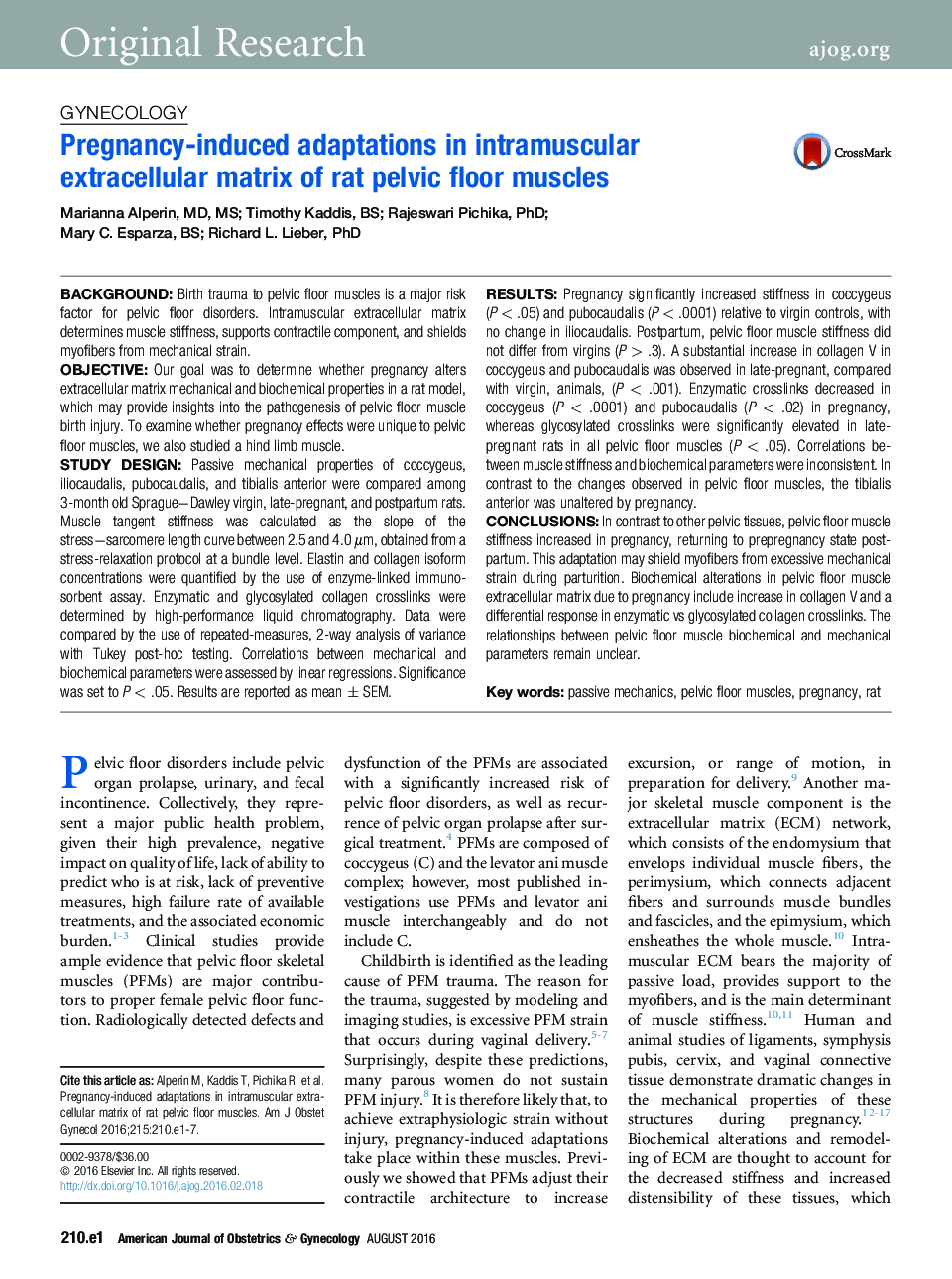| کد مقاله | کد نشریه | سال انتشار | مقاله انگلیسی | نسخه تمام متن |
|---|---|---|---|---|
| 6143645 | 1594887 | 2016 | 7 صفحه PDF | دانلود رایگان |
BackgroundBirth trauma to pelvic floor muscles is a major risk factor for pelvic floor disorders. Intramuscular extracellular matrix determines muscle stiffness, supports contractile component, and shields myofibers from mechanical strain.ObjectiveOur goal was to determine whether pregnancy alters extracellular matrix mechanical and biochemical properties in a rat model, which may provide insights into the pathogenesis of pelvic floor muscle birth injury. To examine whether pregnancy effects were unique to pelvic floor muscles, we also studied a hind limb muscle.Study DesignPassive mechanical properties of coccygeus, iliocaudalis, pubocaudalis, and tibialis anterior were compared among 3-month old SpragueâDawley virgin, late-pregnant, and postpartum rats. Muscle tangent stiffness was calculated as the slope of the stressâsarcomere length curve between 2.5 and 4.0 μm, obtained from a stress-relaxation protocol at a bundle level. Elastin and collagen isoform concentrations were quantified by the use of enzyme-linked immunosorbent assay. Enzymatic and glycosylated collagen crosslinks were determined by high-performance liquid chromatography. Data were compared by the use of repeated-measures, 2-way analysis of variance with Tukey post-hoc testing. Correlations between mechanical and biochemical parameters were assessed by linear regressions. Significance was set to P < .05. Results are reported as mean ± SEM.ResultsPregnancy significantly increased stiffness in coccygeus (P < .05) and pubocaudalis (P < .0001) relative to virgin controls, with no change in iliocaudalis. Postpartum, pelvic floor muscle stiffness did not differ from virgins (P > .3). A substantial increase in collagen V in coccygeus and pubocaudalis was observed in late-pregnant, compared with virgin, animals, (P < .001). Enzymatic crosslinks decreased in coccygeus (P < .0001) and pubocaudalis (P < .02) in pregnancy, whereas glycosylated crosslinks were significantly elevated in late-pregnant rats in all pelvic floor muscles (P < .05). Correlations between muscle stiffness and biochemical parameters were inconsistent. In contrast to the changes observed in pelvic floor muscles, the tibialis anterior was unaltered by pregnancy.ConclusionsIn contrast to other pelvic tissues, pelvic floor muscle stiffness increased in pregnancy, returning to prepregnancy state postpartum. This adaptation may shield myofibers from excessive mechanical strain during parturition. Biochemical alterations in pelvic floor muscle extracellular matrix due to pregnancy include increase in collagen V and a differential response in enzymatic vs glycosylated collagen crosslinks. The relationships between pelvic floor muscle biochemical and mechanical parameters remain unclear.
Journal: American Journal of Obstetrics and Gynecology - Volume 215, Issue 2, August 2016, Pages 210.e1-210.e7
